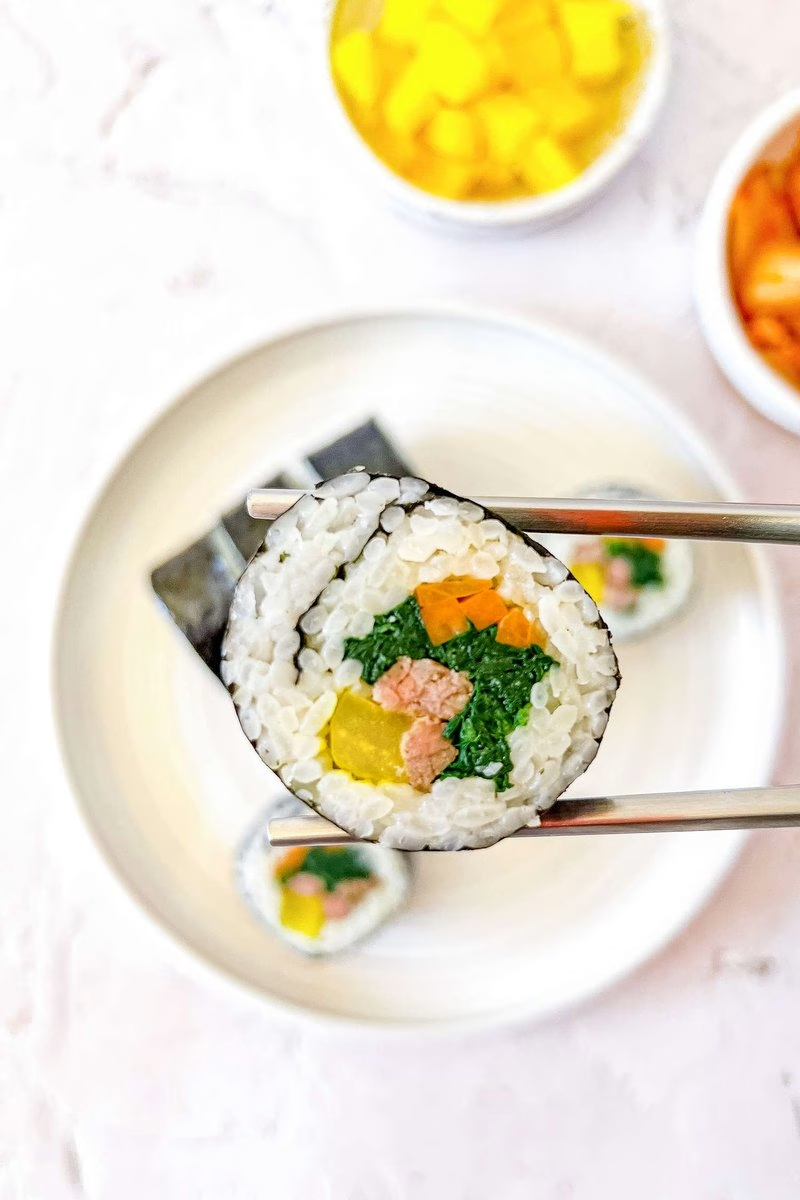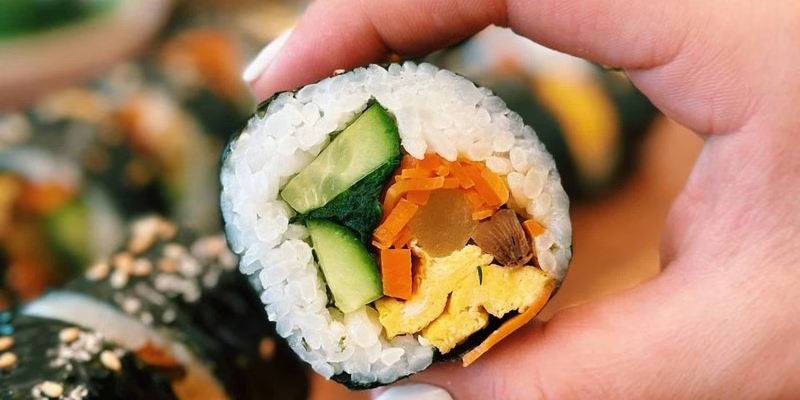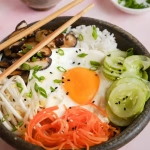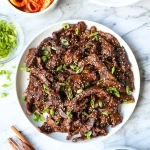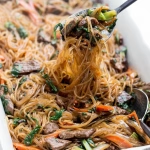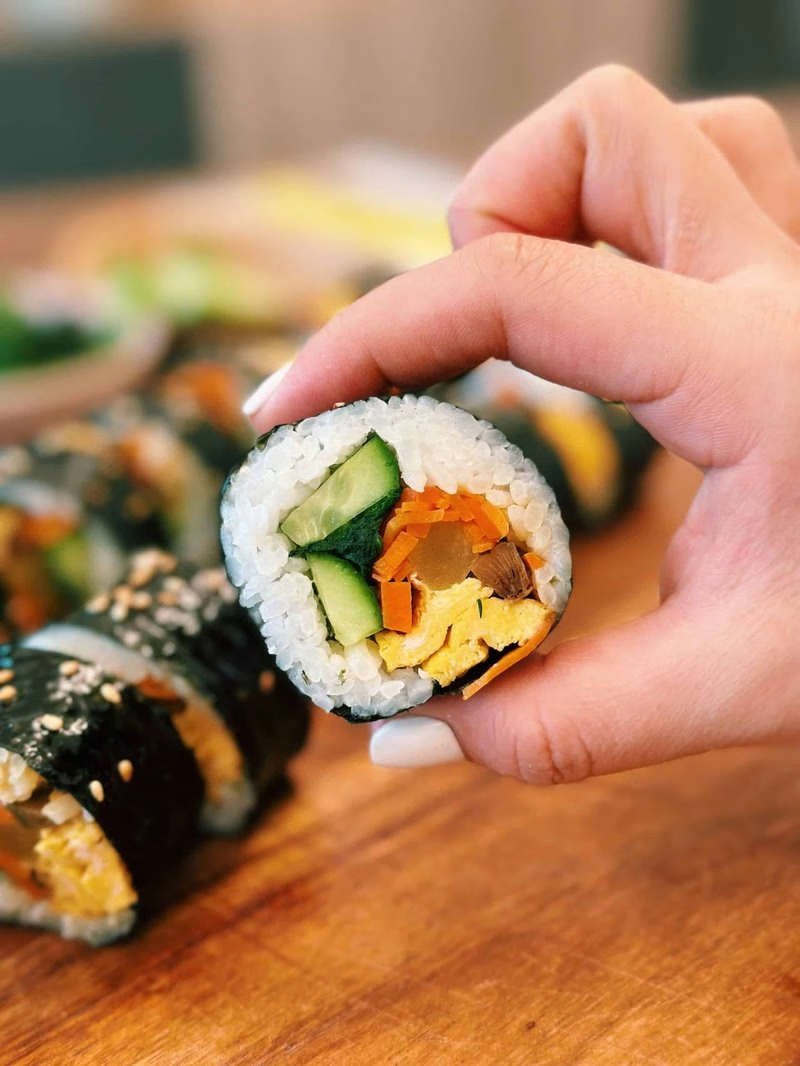
Introduction
Kimbap (Korean Rice Rolls) are not just a culinary delight; they are a celebration of flavors and cultures. Originating from Korea, Kimbap is often compared to sushi, but it has its unique characteristics that set it apart. The blend of fresh ingredients, colorful vegetables, and seasoned rice wrapped in seaweed creates a vibrant meal that is both nutritious and satisfying. Not to mention, Kimbap is a popular choice for picnics and lunch boxes, thanks to its portability and delicious taste.
In this article, you’ll learn how to make Kimbap (Korean Rice Rolls) at home, explore various Kimbap (Korean Rice Rolls) ingredients, discover Kimbap (Korean Rice Rolls) variations, and get tips to enhance your cooking experience. Whether you’re a seasoned chef or a newbie in the kitchen, this guide will help you create the best Kimbap (Korean Rice Rolls) recipe!
Ingredients
| Ingredient | Measurement | Description |
|---|---|---|
| Short-grain rice | 2 cups | Short-grain rice offers the perfect sticky texture that holds the Kimbap together. |
| Seaweed sheets (Nori) | 5-6 sheets | Seaweed sheets provide a savory flavor and make it easy to wrap your delicious fillings. |
| Carrots | 1 medium, julienned | Carrots add a pleasant crunch and vibrant color to your Kimbap (Korean Rice Rolls). |
| Spinach | 1 cup, blanched | Spinach delivers essential nutrients and a lovely green hue. |
| Cucumber | 1 medium, julienned | Cucumber is refreshing and adds a satisfying crunch to every bite. |
| Pickled radish (Danmuji) | 1 cup, sliced | Pickled radish offers a sweet-tangy flavor that balances the other ingredients beautifully. |
| Eggs | 2, beaten | Eggs provide a soft texture and a boost of protein in your Kimbap (Korean Rice Rolls). |
| Sesame oil | 2 tablespoons | Sesame oil gives a nutty aroma and is essential for flavoring the rice. |
| Salt | to taste | Salt enhances the flavors of the ingredients and should be added to your taste. |
Step-by-Step Instructions
- Step 1: Prepare the Rice – Rinse 2 cups of short-grain rice under cold water until the water runs clear. Then, cook it in a rice cooker or pot according to the package instructions. Once the rice is ready, mix in 1 tablespoon of sesame oil and a pinch of salt while it’s still warm.
- Step 2: Cook the Vegetables – Julienne the carrots and cucumber. Heat a pan over medium heat, add a drizzle of sesame oil, and sauté the carrots for about 2-3 minutes until they’re tender. Blanch the spinach in boiling water, then rinse it in cold water to keep the vibrant color. Wring out excess water and season with a little salt and sesame oil.
- Step 3: Make the Egg Omelet – Beat the eggs in a bowl with a dash of salt. Heat a non-stick pan over medium heat, and pour in the eggs to make a thin omelet. Cook until set, then slice it into thin strips.
- Step 4: Assemble the Kimbap – Place a sheet of seaweed on a bamboo mat, shiny side down. Spread a thin layer of rice, leaving about an inch at the top. Layer the sautéed carrots, cucumber, spinach, pickled radish, and egg strips across the center. Be careful not to overfill!
- Step 5: Roll It Up – Using the bamboo mat, carefully roll the Kimbap away from you, pressing gently but firmly to keep everything intact. Seal the edge with a bit of water to ensure it sticks.
- Step 6: Slice and Serve – Using a sharp knife, slice the rolled Kimbap into bite-sized pieces. Serve with soy sauce or your favorite dipping sauce for a delicious experience.
Pro Tips
- Use fresh ingredients for the best flavor and texture in your Kimbap (Korean Rice Rolls).
- Don’t overfill your rolls—keep a balance of flavors and avoid messy bites!
- Experiment with variations—try adding cooked beef, crab sticks, or even tofu for different tastes.
- Keep the rice warm during assembly for easier rolling.
- Wrap in plastic wrap if you’re transporting the Kimbap (Korean Rice Rolls) to keep them fresh and intact.
Nutritional Information
| Nutrient | Per Serving |
|---|---|
| Calories | 250 |
| Protein | 6g |
| Carbohydrates | 40g |
| Saturated Fats | 1g |
| Fiber | 2g |
| Cholesterol | 70mg |
| Sugars | 3g |
| Fat | 8g |
FAQs
What is the best way to store Kimbap (Korean Rice Rolls)?
Storing Kimbap is simple! Wrap it tightly in plastic wrap and keep it in the refrigerator. Ideally, it should be eaten within a day for the best flavor and texture.
Can Kimbap (Korean Rice Rolls) be made vegan or gluten-free?
Absolutely! You can use plant-based proteins like tofu and substitute regular soy sauce with tamari for a gluten-free option.
What are the best side dishes to serve with Kimbap (Korean Rice Rolls)?
Kimbap pairs well with pickled vegetables, kimchi, or a hot and spicy soup for a complete meal.
How long does it take to prepare Kimbap (Korean Rice Rolls)?
Preparation can take about 30-40 minutes, depending on how quick you are with chopping and cooking the ingredients.
Can I freeze Kimbap (Korean Rice Rolls) for later?
While it’s best enjoyed fresh, you can freeze Kimbap. Just wrap it tightly and consume it within a month, although the texture may change.
What fillings can I use in Kimbap (Korean Rice Rolls)?
You can get creative! Common fillings include beef, tuna, carrots, egg, cucumber, and even fruits for a sweet twist.
Is Kimbap (Korean Rice Rolls) healthy?
Yes! Kimbap is healthy, packed with vitamins from fresh vegetables and protein from eggs and meat, making it a balanced meal option.
Can I make Kimbap (Korean Rice Rolls) without rice?
You can experiment with alternatives like quinoa or cauliflower rice for a low-carb version while still maintaining delicious flavors.
Making Kimbap (Korean Rice Rolls) at home is not only rewarding but also a chance to explore Korean cuisine. By following the steps outlined in this guide, you can create your own delicious rolls that can impress family and friends. Don’t hesitate to share your variations and experiences!
Tried this Kimbap (Korean Rice Rolls) recipe? Let us know your experience in the comments!
